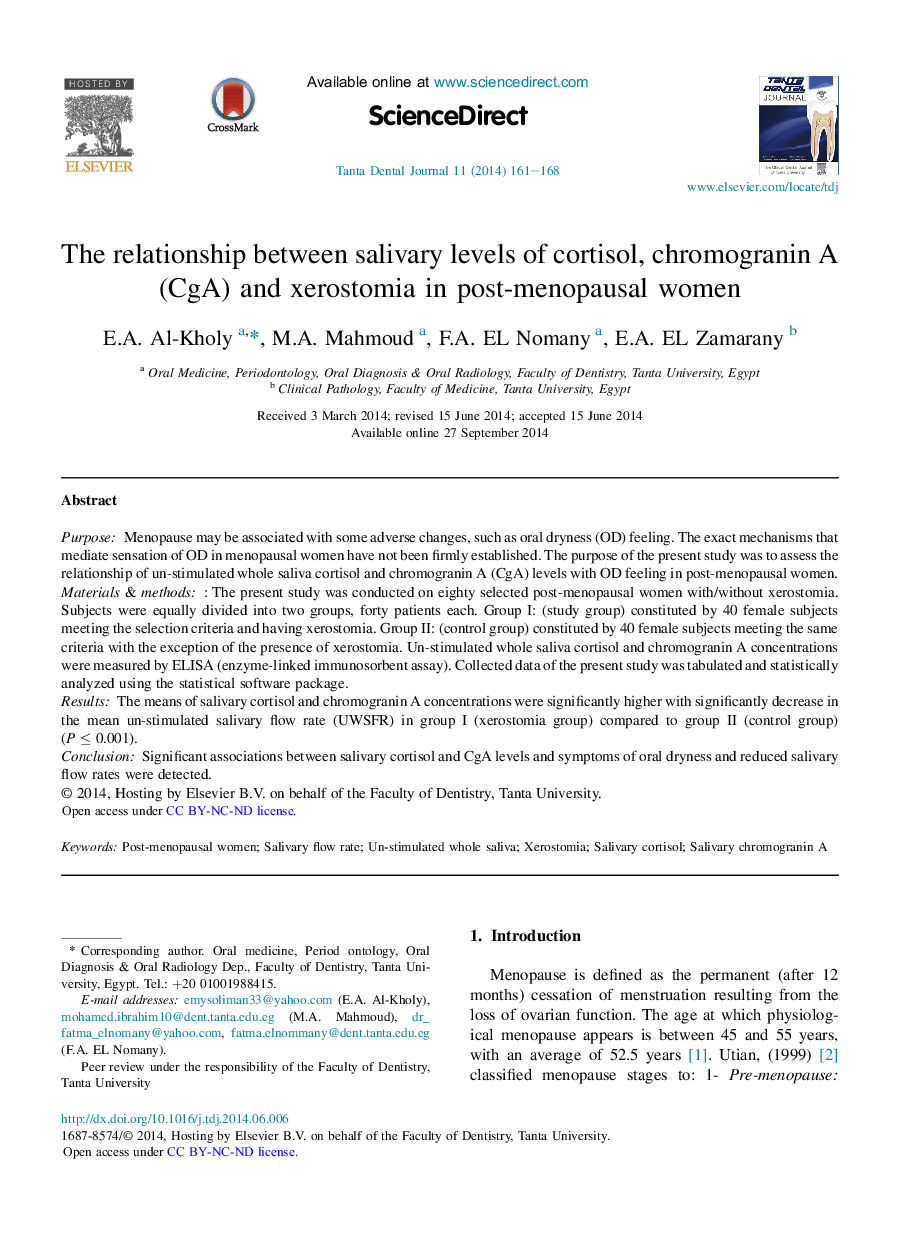| Article ID | Journal | Published Year | Pages | File Type |
|---|---|---|---|---|
| 3179665 | Tanta Dental Journal | 2014 | 8 Pages |
PurposeMenopause may be associated with some adverse changes, such as oral dryness (OD) feeling. The exact mechanisms that mediate sensation of OD in menopausal women have not been firmly established. The purpose of the present study was to assess the relationship of un-stimulated whole saliva cortisol and chromogranin A (CgA) levels with OD feeling in post-menopausal women.Materials & methods: The present study was conducted on eighty selected post-menopausal women with/without xerostomia. Subjects were equally divided into two groups, forty patients each. Group I: (study group) constituted by 40 female subjects meeting the selection criteria and having xerostomia. Group II: (control group) constituted by 40 female subjects meeting the same criteria with the exception of the presence of xerostomia. Un-stimulated whole saliva cortisol and chromogranin A concentrations were measured by ELISA (enzyme-linked immunosorbent assay). Collected data of the present study was tabulated and statistically analyzed using the statistical software package.ResultsThe means of salivary cortisol and chromogranin A concentrations were significantly higher with significantly decrease in the mean un-stimulated salivary flow rate (UWSFR) in group I (xerostomia group) compared to group II (control group) (P ≤ 0.001).ConclusionSignificant associations between salivary cortisol and CgA levels and symptoms of oral dryness and reduced salivary flow rates were detected.
